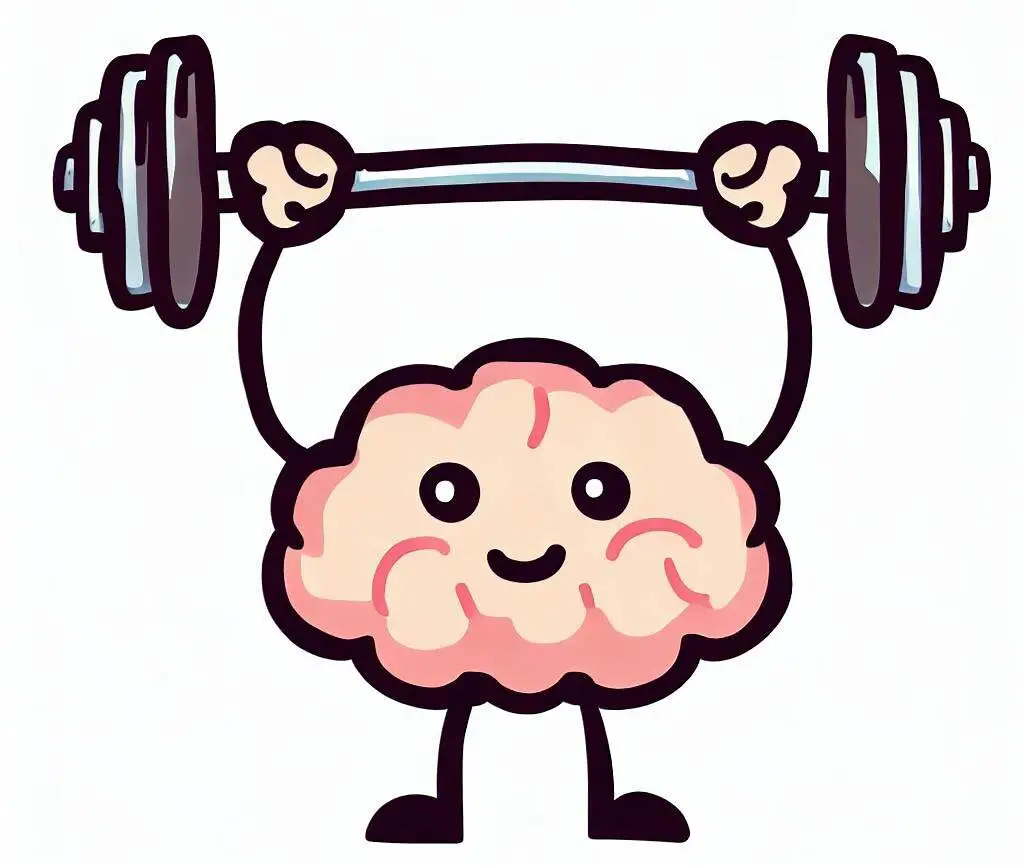We’ve all been there. Whether it’s giving a presentation, walking into an interview, or meeting a new group of people, there are moments when the right words just seem to evaporate. And when learning vocabulary in a foreign language this feeling can be even more intense, with so many unfamiliar words and phrases to remember. It can feel like a mountain we’re not quite sure how to climb. But here’s the good news: Mountains are meant to be climbed! And there are some very effective techniques that can make the climb smoother and more rewarding. Two of these techniques, known as active recall and spaced repetition, have been shown time and again to significantly improve memory and make learning more efficient.
These techniques may sound complex, but they’re actually simple, practical strategies that anyone can use to supercharge their foreign vocabulary learning process.
Active Recall is all about pulling information from your brain without peeking at notes or resources. It’s like exercising your mental muscles—each time you actively recall information, you’re strengthening the connections in your brain, making future access to that information easier.
On the other hand, Spaced Repetition is all about revisiting what you’ve learned at certain intervals. This helps reinforce your learning and lodge information firmly in your long-term memory. Combine these techniques, and you’ve got a recipe for retaining newly acquired vocabulary more effectively and for longer periods.
In the following sections we’ll dive deeper into each of these techniques, explore how to implement them in your vocabulary study routine, and discuss various tools that can assist you in applying active recall and spaced repetition effectively.
Understanding Active Recall
Active recall is a learning strategy that involves actively retrieving information from your memory by self testing, forcing your brain to work harder to recall information.
The magic of active recall lies in the effort it takes to remember. This effort strengthens your memory and comprehension of the material, making it a powerful tool for boosting memory retention and learning efficiency.
Why is Active Recall Effective?
Well, for one thing, when you test yourself and actively recall information, you’re strengthening the neural pathways associated with this information, making it easier to access in the future.
Let’s think of our brains like a computer for a moment. When you learn a new vocabulary word, it’s as if you’re creating a new file and saving it somewhere in the depths of your computer system. Now, when you need that file (or vocabulary word), you can’t just expect it to pop up; you have to actively search for it amongst the countless other files stored in your system. This is the essence of active recall – actively retrieving the information, or ‘locating the file’, in your mind. The more you practice finding this file, the quicker and easier it becomes to access it when you need it.
One study found that students who used active recall had a 50% higher performance rate compared to those who used passive learning techniques like re-reading notes or highlighting text.
Another reason active recall is so effective lies in its ability to help you identify any gaps in your knowledge. When you can’t recall a word, or struggle to use it properly in a sentence, it signifies that more practice is needed. This immediate feedback is valuable as it helps direct your focus and study efforts more efficiently.

How to Apply Active Recall in Your Vocabulary Study
Implementing active recall into your study routine may require more effort than traditional learning methods at first. Here are some practical ways to use active recall for foreign vocabulary learning:
1. Choose Your Vocabulary:
Start by selecting a set of new words that you want to learn. It could be words related to a specific theme, from a chapter in a book, or just words you’ve come across and would like to remember.
2. Study Actively, Not Passively:
Once you have your set of words, avoid just reading over them and moving on. Engage with them actively. Use them in sentences, write them down, say them out loud. Try to create a mental picture or association for each word. This active engagement is key to starting the recall process.
3. Self-Testing:
After you’ve studied the words actively, it’s time to test yourself. Cover the meaning of the words and try to recall it, or cover the word and try to recall it from its meaning. You can do this verbally or in writing. Remember, the goal is to make your brain work to retrieve the information.
4. Teach the Words:
One of the best ways to remember something is to teach it to someone else. Explain the words, their meaning, and how to use them in a sentence to a friend, family member, or even your pet! It’s a fun and effective way to reinforce your memory.
5. Use the Words in Context:
After you’ve mastered recalling the words, it’s time to use them in context. Write an email using the words, or a story, use them in conversation, or find a song or movie where they are used. This will help the words become a natural part of your vocabulary.
Remember, this is a journey. You might not recall every word perfectly every time, and that’s perfectly fine. The most important thing is to keep going, keep engaging, and keep recalling. Before you know it, you’ll have a wealth of new vocabulary at your disposal.
Key takeaway
Active recall is a proven technique for enhancing memory retention and learning efficiency. By actively retrieving information, you strengthen your neural pathways and reinforce your understanding of the material. Start by incorporating a few active recall strategies into your study sessions and notice the difference. But remember, active recall is just one half of the power duo in effective learning.
In the next section we’ll explore the concept of spaced repetition and how it can optimize your review sessions and combat the forgetting curve.
Understanding Spaced Repetition
Spaced repetition is a powerful learning technique that helps you retain information in your long-term memory. It involves repeating the information at specific intervals to ensure you don’t forget it before reviewing it again. This method increases the efficiency of your learning process by leveraging the spacing effect – a psychological phenomenon where learning is more effective when it is spaced out over time.
The Science Behind Spaced Repetition
Understanding the Forgetting Curve
The idea of spaced repetition is based on the “Forgetting Curve”, which is a concept introduced by psychologist Hermann Ebbinghaus. His reserach demonstrated how our ability to retain information in our memory declines over time if there’s no attempt to retain it.
In essence, it showed that we forget things quickly soon after we learn them, unless we reinforce the knowledge periodically. This curve dips sharply after the initial learning phase, but the decline slows down with time.
Still thinking of our brains as a computer, consider what happens if you don’t open the file regularly, the computer system starts to move it to the back storage. But if you keep opening the file, it stays right up front, easily accessible when you need it.
Resetting the Curve with Spaced Repetition
That’s where the power of spaced repetition comes in – by reviewing the material at strategic intervals, we can ‘reset’ the forgetting curve, helping us retain more information for longer periods.
The Benefits of Spaced Repetition in Vocabulary Learning
Spaced repetition is a bit like a personal trainer for your brain, bringing several benefits to your vocabulary learning routine:
1. Enhanced Memory Retention: This method helps you transfer vocabulary from your short-term memory to your long-term memory.
2. Reduced Cognitive Load: This refers to the amount of information that our working memory can handle at once. When we exceed this capacity, we can struggle to grasp new concepts. Spaced repetition assist in managing cognitive load effectively. By reviewing material at optimal intervals, you can process information more efficiently, leading to improved learning and comprehension.
3. Efficient Learning Sessions: With spaced repetition, you focus more on the vocabulary that tends to slip away and less on the ones you’ve already mastered.
Key Takeaway
Spaced repetition is a proven technique for improving vocabulary retention and learning efficiency. By scheduling your review sessions based on the forgetting curve, you can optimize your learning process and commit new vocabulary to your long-term memory more effectively.
But how does spaced repetition pair with active recall? And how can these strategies be integrated into the complex task of learning a foreign language?

Combining Active Recall and Spaced Repetition in Vocabulary Learning
Now, let’s delve into a practical example – learning foreign vocabulary.
Recall our computer analogy? With active recall and spaced repetition, you’re not just creating files (or learning vocabulary words) and saving them in your system; you’re also actively retrieving these files and signalling their importance. This combination of searching for your files (active recall) and regularly accessing them (spaced repetition) is what makes these techniques incredibly effective for vocabulary learning. By using both, you’ll ensure the vocabulary you learn can be easily accessed in your mind, much like your most important files are always at your fingertips on a well-organised computer.
In this section, we will explore how these strategies can be combined and applied to learning new vocabulary in your target language to maximize memory retention and learning efficiency.
1. Divide Vocabulary into Manageable Groups:
Break down your vocabulary learning into smaller, more manageable groups. You might divide words by topic (food, clothing, travel, etc.), by part of speech (nouns, verbs, adjectives, etc.), or by difficulty level. Having these categories can make your study sessions more focused and productive.
2. Initial Study:
Study each group of words thoroughly during your initial study session. Try to use the words in sentences or associate them with images or stories, as this can make the vocabulary easier to remember.
3. First Review:
The first review should happen shortly after the initial study session—usually within a day. This helps to reinforce the newly learned words.
4. Subsequent Reviews:
After the first review, you can start to space out your study sessions. The exact timing can vary, but a common approach is to gradually increase the intervals between study sessions. For example, you might review the vocabulary after one day, then two days, then four days, and so on.
5. Adjust Based on Performance:
If you find that you’re struggling to remember certain words or groups of words during your reviews, those may need to be reviewed more frequently. On the other hand, if you’re easily recalling certain vocabulary, you might be able to increase the time between reviews for those words.
6. Utilize Active Recall:
Remember, the goal is not just to memorize the words, but to be able to actively recall them and use them in context. This is why actively testing yourself, such as by translating sentences or having conversations, rather than passively reviewing, is such a critical part of the process.

Tools for Enhancing Active Recall and Spaced Repetition Techniques
As we’ve seen, active recall and spaced repetition are two powerful techniques to boost your memory retention and learning efficiency. To help you apply these techniques more effectively, we’ll now explore the various tools that can assist you in your active recall and spaced repetition journey.
WordTap – A Game for Vocabulary Practice and Active Recall
WordTap is a customizable game designed to make vocabulary learning an engaging and interactive experience. At only two minutes per game, it not only makes learning enjoyable but was also created with the ideas of active recall and spaced repetition in mind. As you play, you’ll need to recall words repeatedly, enhancing your language learning process.
The Goldlist Method – Reflective Vocabulary Mastery
The Goldlist Method is a distinctive approach that allows for relaxed and stress-free vocabulary learning. You start with a list of words or phrases, wait two weeks, then distill the list down to the words that come back to you most easily. The process is repeated over time, with increasingly spaced intervals, promoting natural, long-term retention. While not tech-driven, it’s a practical method for learners who prefer a more reflective pace.
Anki – The Spaced Repetition Powerhouse
Anki is a popular, free, and customizable app that utilizes spaced repetition to help you retain information longer. It uses smart algorithms to present information to you at the optimal time, which ensures maximum retention. With Anki, you can create your own flashcards or download shared decks, tailoring your study materials to your needs.
Flashcards – Your Active Recall Ally
Flashcards can be an effective technique for active recall, whether you’re using traditional paper cards or digital tools. Create your own flashcards, with questions on one side and answers on the other, to test your knowledge and strengthen memory retrieval. Digital apps like Brainscape and Quizlet take this a step further by incorporating spaced repetition, making your study sessions even more effective.
Textbooks and Notes – Don’t Underestimate Them
When it comes to active recall, your textbooks and notes can be powerful tools. To make the most of these resources, avoid passive review. Instead, after reading a section, close your textbook or notes and try to recall the material you just learned. By doing this, you’re forcing your brain to retrieve information, thereby strengthening your memory.
Practice Questions and Tests – The More, the Merrier
Working on practice questions and taking tests can help you apply active recall and spaced repetition. By regularly testing your knowledge, you’re increasing your memory retrieval capabilities and learning faster. Resources like Passmedicine and Osmosis flashcards can assist you with this process.
Apps and Software – Technology at Your Service
There are numerous apps and software available, like Active Recall, that are designed to help you practice active recall and spaced repetition. These programs can be particularly helpful for language learners, as they often provide a streamlined card-building process tailored to your learning needs. Don’t hesitate to explore various tools to find the ones that work best for you and your study methods.
To Sum Up
Tools can significantly boost your active recall and spaced repetition efforts. Whether you choose to use just one, or a combination of various resources, remember that the key to success is consistency. Regular practice and review, coupled with the right tools, will enable you to reap the benefits of active recall and spaced repetition.
Maximizing Your Learning: Tips to Take Active Recall and Spaced Repetition Even Further
Throughout this post, we’ve explored the powerful learning techniques of active recall and spaced repetition, and how to implement them effectively using various tools. In this final section you’ll find additional tips to further enhance your active recall and spaced repetition strategy, enabling you to maximize your learning efficiency.
Incorporate Multiple Learning Techniques
Diversify your learning process by including different study techniques like summarizing, note-taking, and teaching others. Combining these techniques with active recall can enhance your understanding of the material and help you retain the information more effectively.
Focus on Difficult Topics
Rather than spending equal time on all subjects, allocate more time to topics you find challenging. Practicing active recall on these difficult subjects will help you build your skills and overcome the challenges.
Create Associations and Analogies
Establishing connections between new information and prior knowledge can improve your memory retention. When trying to remember complex concepts, develop associations or analogies with familiar ideas, which helps your brain recognize and store the new information.
Test Yourself Regularly
By consistently testing yourself on the material you’re learning, you’ll reinforce the information in your memory. Take advantage of online resources like flashcards and question banks to test your knowledge.
Avoid Passive Learning
Instead of relying on passive learning methods such as reading or watching videos, engage in active recall by actively testing your knowledge without cues. This proves to be a more effective approach for long-term retention.
Take Breaks and Prioritize Your Well-being
Adequate rest and self-care are essential for effective learning. Fatigue can hinder memory consolidation, so ensure you get enough sleep, eat well, and practice stress management techniques.
Customize Your Spaced Repetition Schedule
Tailor your study plan based on your unique learning needs. Adjust the intervals between study sessions according to the difficulty of the material and your existing knowledge.
Incorporating these tips into your active recall and spaced repetition strategy will further enhance your learning process and optimize your memory retention. Remember, the key to successful learning is consistent practice, utilizing the right tools, and taking care of your overall well-being.

Frequently Asked Questions
1. What is Active Recall?
Active Recall is a learning strategy that involves actively trying to remember information. Instead of just reading or re-reading notes, you are actively engaging your brain to remember vocabulary or concepts.
2. What is Spaced Repetition?
Spaced Repetition is a study technique that involves reviewing information at specific intervals over time. This method helps to ‘reset’ the forgetting curve, improving long-term memory retention.
3. How does Active Recall help in learning vocabulary?
Active Recall helps you to reinforce your memory of new vocabulary by actively retrieving it from your memory. This effort strengthens your memory and comprehension of the words, making it a powerful tool for boosting memory retention and learning efficiency.
4. How can Spaced Repetition be used in vocabulary learning?
Spaced Repetition can be used in vocabulary learning by reviewing new words at strategic intervals. Initially, review more frequently, then gradually increase the time between reviews. This way, you reinforce your memory just as you’re about to forget the words, thereby strengthening your vocabulary retention.
5. How do Active Recall and Spaced Repetition work together?
Active Recall and Spaced Repetition are two sides of the same coin. While Active Recall strengthens your memory by actively retrieving information, Spaced Repetition ensures you review this information at the right times to maximize retention.
6. What are the benefits of using Active Recall and Spaced Repetition?
Using Active Recall and Spaced Repetition can enhance memory retention, reduce cognitive load, and make learning sessions more efficient. It helps you commit information to your long-term memory and spend more time reviewing material you’re likely to forget, making your vocabulary learning journey more effective.
7. What is the Forgetting Curve?
The Forgetting Curve is a concept introduced by psychologist Hermann Ebbinghaus, which shows how our ability to retain information declines over time without reinforcement. Spaced Repetition helps to ‘reset’ this curve, helping us retain more information for longer periods.
8. How does spaced repetition work in learning vocabulary?
When learning new words, you review them at strategic intervals. This ‘resets’ the forgetting curve, enabling you to retain more words in your long-term memory.
9. Can I use spaced repetition for any language?
Absolutely! The beauty of spaced repetition is that it works for all languages. Whether you’re learning Spanish, French, Mandarin or any other language, you can use this technique to enhance your vocabulary.
10. What if I forget to do a spaced repetition review?
If you miss a review, just do it as soon as you can and then adjust your schedule accordingly. The key is consistency over time, so don’t be disheartened by occasional misses.
11. Can I use spaced repetition alongside other learning techniques?
Certainly. Spaced repetition works great with other learning strategies, such as active recall or immersion. In fact, combining methods can often enhance the overall learning experience.
12. How can I start using spaced repetition for vocabulary learning?
Start by choosing the words you want to learn. Familiarize yourself with them, actively recall them, and then plan your reviews based on the forgetting curve. You’ll review more frequently at first and then gradually increase the intervals between reviews.
In Conclusion
You did it! You reached the end of this comprehensive guide on active recall and spaced repetition. Well done! These techniques can be a little time consuming at first, but once you get into the habit, it really pays off. Remember, learning is a lifelong journey, and these techniques can be your companions along the way, but the most important aspect of the journey is YOU, and believing in the process. Happy vocabulary learning!




